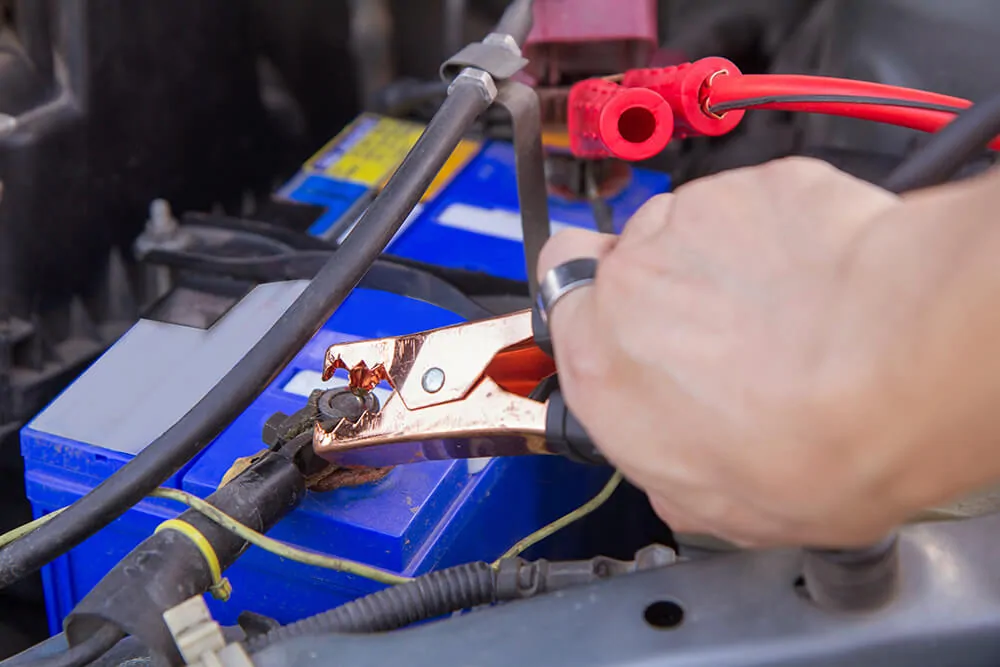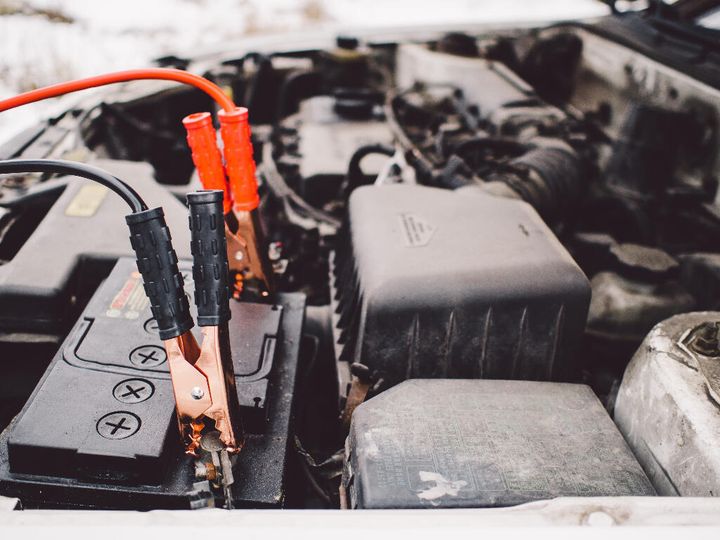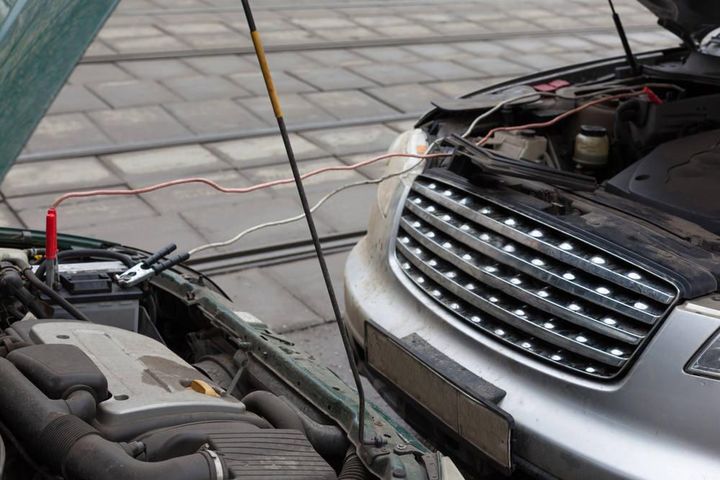


Jumpstarting a car with a faulty alternator can provide a temporary fix to get your vehicle running, but it's not a permanent solution and carries potential risks. The alternator is a crucial component that charges the battery and powers the electrical systems while the engine is running. When it fails, the battery will eventually drain, leaving you stranded.
This article explores the role of the alternator, the jumpstarting process, its limitations and risks, and the importance of alternator replacement. We'll also cover proper jumpstarting procedures, electrical system diagnostics, and what to expect when driving after a jumpstart.

The alternator converts mechanical energy from the engine into electrical energy, charging the battery and powering various electrical components. When it fails, the consequences can be severe.
| Symptom | Description |
|---|---|
| Dimming lights | Headlights or interior lights may dim or flicker |
| Battery warning light | The dashboard battery warning light may illuminate |
| Electrical issues | Accessories like the radio or power windows may not work properly |
| Dead battery | The battery may frequently die or need recharging |

Jumpstarting involves using another vehicle's battery to provide a temporary boost of electrical power to start a car with a dead or weak battery. It requires jumper cables and safety equipment.
| Equipment | Purpose |
|---|---|
| Jumper cables | Heavy-duty cables with clamps to connect the batteries |
| Safety gear | Gloves, goggles, etc., to protect against battery acid |
| Another vehicle | With a charged battery to provide the power boost |
Yes, you can jumpstart a car with a bad alternator, but it's only a temporary solution. The jumpstart provides a boost of power from the other vehicle's battery, allowing your car's battery to have enough charge to start the engine.
However, once the car is running, the faulty alternator cannot recharge the battery. This means you have a limited window of time, typically 5 to 30 minutes, before the battery drains again, and the car will not start.
Potential risks involved:
Voltage spikes or surges can damage sensitive electrical components
Continued battery drain can lead to being stranded again
Driving with a faulty electrical system can be hazardous
Follow these steps to jumpstart a car with a bad alternator safely:
Park both vehicles in a safe location, and turn off all accessories.
Connect the red jumper cable to the positive (+) terminal of the dead battery, then to the positive (+) terminal of the good battery.
Connect the black cable to the negative (-) terminal of the good battery, then to a metal ground on the car with the dead battery (e.g., engine block or frame).
Start the vehicle with the good battery and let it run for a few minutes.
Try starting the car with the dead battery.
Once started, remove the cables in the reverse order.
Proper cable connection is crucial to avoid sparks or short circuits. Always connect the positive (red) cables first, followed by the negative (black) cable to a metal ground, away from the battery.
Once the car is running after a jumpstart, the faulty alternator cannot recharge the battery. This means the battery will continue to drain as you drive, powering the electrical systems.
It's essential to monitor the battery level closely while driving. If the battery warning light comes on or electrical components start malfunctioning, it's a sign that the battery is draining rapidly, and you should stop driving as soon as possible.
With a limited driving time after a jumpstart, your goal should be to reach your destination or a repair facility as quickly as possible. Avoid unnecessary electrical loads, such as running the air conditioning or radio, to conserve battery power.
Jumpstarting a car with a bad alternator is only a temporary solution. It does not fix the underlying issue, which is the faulty alternator itself.
Continuing to drive with a bad alternator can lead to further electrical issues and potential damage to other components. The battery will eventually drain completely, leaving you stranded and potentially causing more costly repairs.
To resolve the issue permanently, the alternator must be replaced. This typically involves:
Diagnosing the alternator failure through electrical system testing
Removing the faulty alternator from the engine bay
Installing a new, compatible alternator
Testing the new alternator and electrical system for proper operation
It's recommended to have the alternator replaced by a professional mechanic or at an automotive repair shop to ensure the job is done correctly and to avoid further issues.
Diagnosing an alternator failure often involves a combination of visual inspections, electrical system testing, and checking for specific symptoms.
| Diagnostic Method | Description |
|---|---|
| Voltage testing | Checking the battery voltage and alternator output voltage |
| Load test | Performing a load test on the alternator |
| Visual inspection | Inspecting the alternator for physical damage or wear |
| Connection check | Checking for loose or corroded electrical connections |
While a faulty alternator is a common cause of electrical problems, there may be other issues contributing to or causing the symptoms, such as battery failure, wiring issues, or faulty electrical components.
For accurate diagnosis and proper repairs, it's recommended to have your car's electrical system evaluated by a professional mechanic or automotive technician.
Jumpstarting a car with a bad alternator can provide a temporary solution to get you back on the road, but it's not a permanent fix. Understanding the limitations, potential risks, and the need for alternator replacement is crucial for safe and reliable driving.
Proper jumpstarting procedures and timely repairs can prevent further electrical issues and costly damages. Remember, the alternator plays a vital role in charging the battery and powering the electrical systems. When it fails, the battery will eventually drain, leaving you stranded. Jumpstarting can buy you some time, but it's essential to have the alternator replaced as soon as possible to restore the electrical system's proper functioning and avoid potential hazards or breakdowns.
Potential risks include voltage spikes or surges that can damage sensitive electrical components, continued battery drain leading to being stranded again, and driving with a faulty electrical system which can be hazardous.
Once the car is running after a jumpstart, you typically have a limited window of 5 to 30 minutes before the battery drains again, as the faulty alternator cannot recharge it.
Connect the red jumper cable to the positive terminals first, then the black cable to the negative terminal of the good battery and a metal ground on the car with the dead battery. Start the good battery car, then the dead battery car. Remove cables in reverse order.
Jumpstarting is only a temporary solution and does not fix the underlying issue of the faulty alternator. Continuing to drive without replacing the alternator can lead to further electrical issues, potential damage, and being stranded again.
Diagnostic methods include voltage testing, load testing the alternator, visual inspection for damage or wear, and checking for loose or corroded electrical connections. Professional evaluation is recommended for accurate diagnosis.
The alternator converts mechanical energy from the engine into electrical energy, charging the battery and powering various electrical components while the engine is running. It is crucial for maintaining the electrical system's operation.
Yes, battery failure, wiring issues, or faulty electrical components can contribute to or cause similar symptoms, such as dimming lights or a dead battery. Proper diagnosis is important to identify the root cause.
Safety gear like gloves and goggles should be worn to protect against battery acid. Proper cable connection order and grounding are crucial to avoid sparks or short circuits.
If the battery warning light comes on or electrical components start malfunctioning, it's a sign that the battery is draining rapidly. Stop driving as soon as possible to avoid being stranded.
Yes, voltage spikes or surges during jumpstarting can potentially damage sensitive electrical components. Continuing to drive without replacing the alternator can also lead to further electrical issues and costly repairs.

Miguel started tinkering with car radios as a teenager, fascinated by the intricate dance of wires and circuits. This passion led him to pursue a career as an automotive electrician. For the past 10 years, Miguel has tackled everything from flickering headlights to mysterious electrical gremlins. He thrives on troubleshooting electrical problems and enjoys sharing his knowledge to empower car owners to understand their vehicles better.



